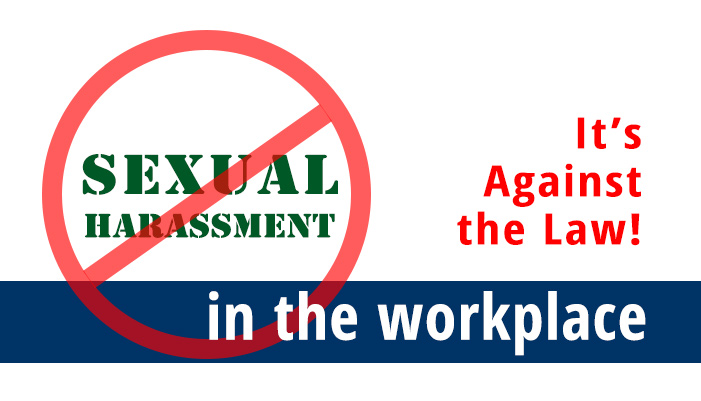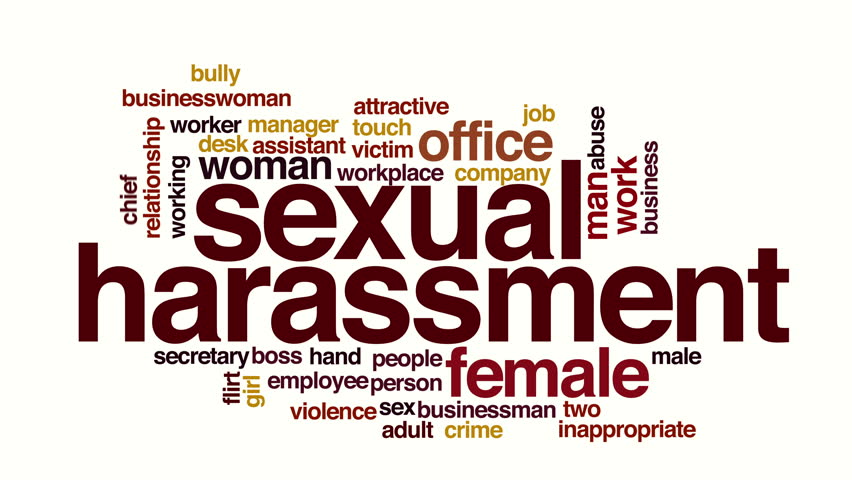Sexual harassment in the workplace
.jpg)
Sexual harassment is one of the biggest problem in the world. There in no country which is safe from this problem and there are millions of victims of sexual harassment and daily more people infect with this problem. Even men and child are not safe from sexual harassment.
Workplace sexual harassment is internationally condemned as sex discrimination and a violation of human rights, and more than 75 countries have enacted legislation prohibiting it. Sexual harassment in the workplace increases absentee ism and turnover and lowers workplace productivity and job satisfaction. Yet it remains pervasive and under reported, and neither legislation nor market incentives have been able to eliminate it. Strong workplace policies prohibiting sexual harassment, workplace training, and a complaints process that protects workers from retaliation seem to offer the most promise in reducing sexual harassment.
Key Findings
Author Message
Sexual harassment, a violation of human rights and a form of sex discrimination, is costly to workers and organizations. Yet although more than 75 countries have legislation prohibiting sexual harassment in the workplace, it remains pervasive and under reported. To date, laws and market incentives have been insufficient to eradicate workplace sexual harassment. Success may require policies to enhance market and legal incentives by raising the costs to organizations of tolerating an adverse work environment, promulgating strong policies against sexual harassment, and establishing a complaints process that protects workers from retaliation.
.jpg)
Before the 1970s, the term “sexual harassment” would have been met with a blank look. Sexual overtures and disparaging remarks about workers’ competence based on their gender were widely considered acceptable behavior. In 1974, a US district court judge found that a woman whose job was eliminated in retaliation for refusing to have sex with her supervisor was not protected under employment law but was instead facing the personal consequences that may arise when sexual advances are rebuffed.
.jpg)
Recognition of sexual harassment as an illegal workplace behavior originated in the US following influential work by Catharine MacKinnon, who argued that sexual harassment is sex discrimination under Title VII of the Civil Rights Act of 1964. In 1980, the US Equal Employment Opportunity Commission (EEOC) issued guidelines defining workplace sexual harassment. Many countries quickly followed the US’s lead in recognizing sexual harassment as an illegal form of workplace behavior. Sexual harassment in the workplace is now internationally condemned as a form of sex discrimination and as a violation of human rights. It is costly to workers and organizations. Yet it remains pervasive. What market failures prevent its eradication, how effective is legislation, and what policies can reduce the incidence ?
Defining Sexual Harassment
.jpg)
Sexual harassment includes a wide range of behaviors, from glances and rude jokes, to demeaning comments based on gender stereotypes, to sexual assault and other acts of physical violence. Although the legal definition varies by country, it is understood to refer to unwelcome and unreasonable sex related conduct. A fairly comprehensive definition considers sexual harassment as “any unwelcome sexual advance, request for sexual favor, verbal or physical conduct or gesture of a sexual nature, or any other behavior of a sexual nature that might reasonably be expected or be perceived to cause offense or humiliation to another. Such harassment may be, but is not necessarily, of a form that interferes with work, is made a condition of employment, or creates an intimidating, hostile, or offensive work environment”.
Acts of sexual violence are always considered to be sexual harassment (as well as criminal acts). Suggestive jokes or insulting remarks directed at one sex may be considered sexual harassment in the legal sense, but not always, depending on context and frequency. And there is not a clear line between annoying courtship overtures and sexual harassment. Quantifying the severity of sexual harassment is even more challenging, as people react differently to objectively identical treatment. Furthermore, women tend to apply the term sexual harassment to more severe forms only, such as sexual violence.
Prevalence And Trends
Survey evidence documenting that sexual harassment is widespread has been important to the development of sexual harassment law. But survey methodologies differ widely, and, even among studies with representative samples, estimates of the prevalence of sexual harassment vary considerably.
Special thanks to Author Joni Hersch for this very informative article.
This is more common than we think and should be prevented